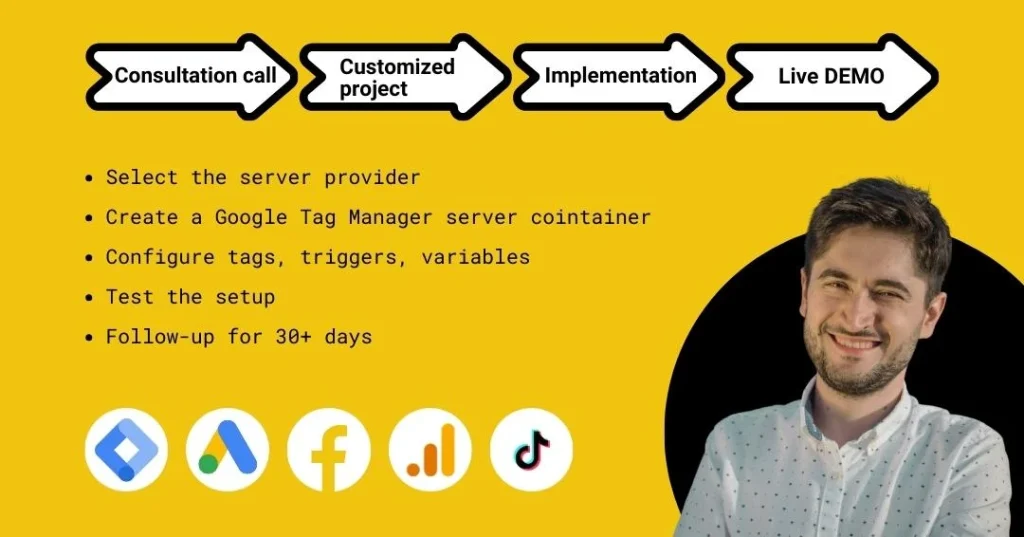About This Service
Consumer behavior is changing faster than ever. It’s a fact that consumers care more about privacy, and for good reasons.
A recent global survey shows that 68% of consumers are somewhat or very concerned about their online privacy.
We also know that Europeans are top users of Ad blockers: 37% in France and up to 45% in Germany.
Authorities are also busy. Since introducing GDPR regulations back in 2018, we’ve seen a continuous evolution of privacy regulations.
Now, consider 3rd-party cookies will disappear in 2024 2025…
And don’t forget that 1st party cookies are lasting 7 days on browser like Safari or Firefox.
It’s clear: there’s an enormous impact on businesses. Privacy matters and old data sources are not working anymore. If you are still relying on browser tracking and cookies, the times are challenging.
Fortunately, there is a solution that can help you get back on track: server side tracking (or tagging).
Why You Should Use Google Tag Manager Server-Side Tagging?
I have run digital marketing campaigns since 2013. I understand the importance of tracking website traffic and user behavior. They are key for campaigns optimization.
But during the last 2 years, we’ve seen a significant drop of conversions matching between the ad platforms and the backend sales data from CRM or CMS (remember the iOS 14 update?)
So, how do we get back on track?
My preferred way is to use Google Tag Manager’s server-side tagging. I’ve noticed a 10-30% increase in recorded conversions (purchases/leads) when switching from client-side (browser) to a server-side setup.
The server container uses the same tag, trigger, and variable model that you’re used to with client-side tagging. However, it executes tags on the server-side instead of on the user’s browser or device. Besides matching more conversions (which always help the ad platforms algorithms), this setup can also reduce page load times and improve the overall user experience.
Server-side tagging not only boosts website performance but also aids in complying with data privacy regulations like GDPR and CCPA. By processing data on the server-side, you can reduce the amount of data that is sent to third-party vendors and ensure that user data is handled in a compliant manner.
Overall, Google Tag Manager’s server-side is a valuable tool that I recommend to all my customers who are looking to:
- improve website performance
- comply with data privacy regulations
- measure up to 30% more conversions
Every project is unique, but let’s see how I usually approach a server-side data tracking project.
How I Approach Your Server-Side Tracking Project
I favor a comprehensive approach to set up a server-side tracking project with Google Tag Manager. I believe that a well-structured method is the foundation for a future-proof implementation.
Bellow is a list of the key steps that I follow:
- Create/check your existing Google Tag Manager web container implementation
- Check and optimize your current dataLayer setup (for ecommerce projects)
- Create the Google Tag Manager container
- Setup a subdomain for your server
- Select the hosting for the server
- Add the required tags for your custom setup
- Test the new server-side tracking setup
- Push changes to LIVE
- Follow-up during 20 days to ensure the setup works smoothly
Are You Ready For A Server-Side Setup ?
Then reach out today for a custom-made offer.
I’ll be glad to help you improve the data collection, which should have a positive impact on your ad campaigns performance.








